A real plethora of mortar mixes
We have just completed investigations into the types of plasters, ceiling finishes and floor build ups used, and their historic significance and condition, at a house with 17th century vernacular origins, just south of Nottingham. This allowed us to propose general specifications for repairs, as well as breathable insulation upgrade options, for external walls, where original finishes were missing.
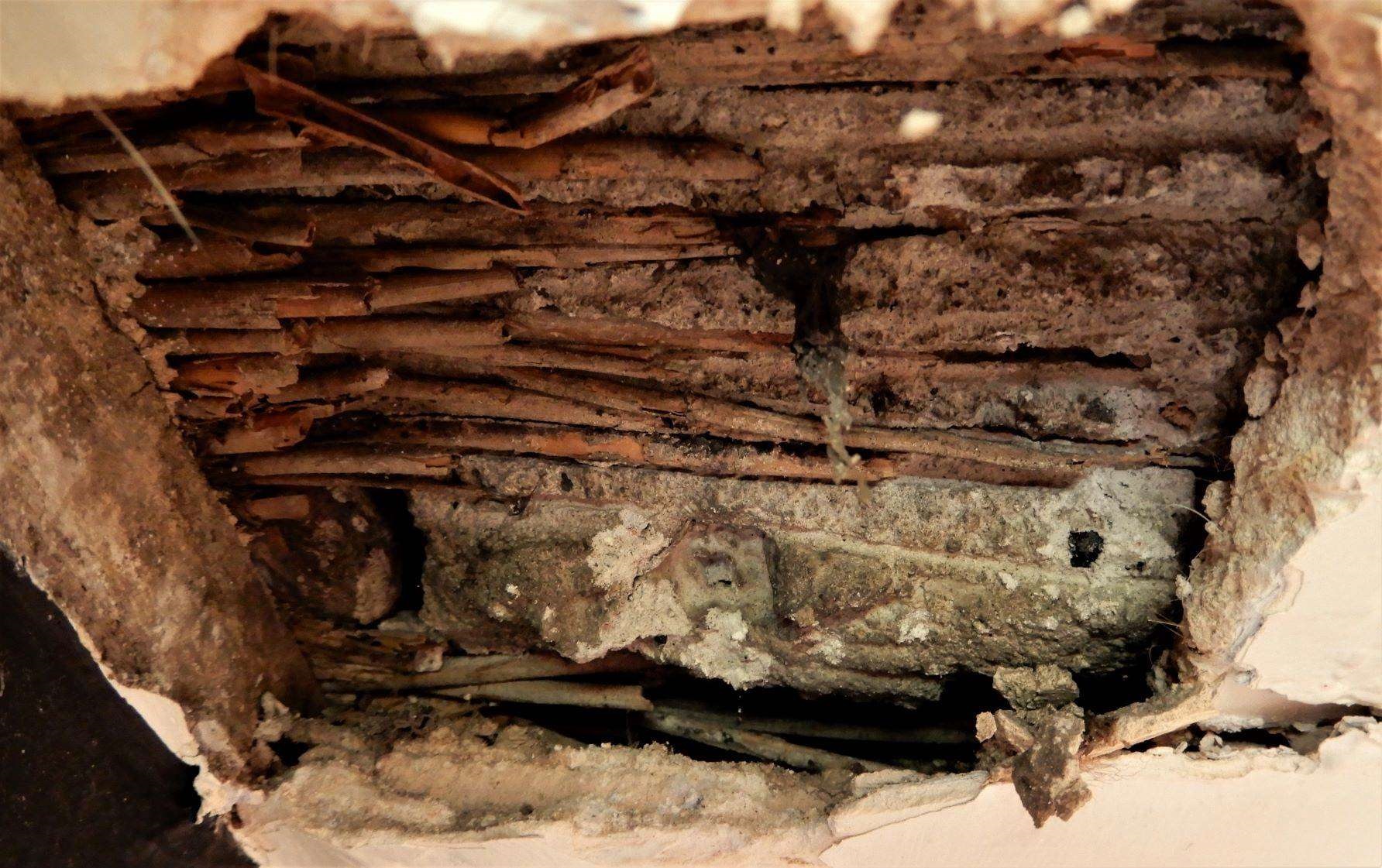
Gypsum gauged lime plaster to underside of reeds, with lime ash floor above
The house dating to the 17th century with a late 17th or early 18th extension, and 19th & 20th century additions and alterations, is a Grade II Listed Building. It incorporates remnants of the earlier vernacular dwelling, illustrating the building materials and practices used over three centuries. However, a significant proportion of the original fabric that survives is under threat from decay and collapse. Where original timbers are in their original positions, or have been reused, they are being damaged by cement render finishes and cement screeds on the ground floor, as are other elements of the historic fabric, some of which is unsafe and requires significant repair.
The mortar analysis carried out by M Womersleys identified a real plethora of mixes from different periods. Principally, because the geology of Nottingham means that lime and gypsum were available from the 17th century onwards, hydraulic lime was manufactured nearby, from the mid-19th century and cements from the late 19th century, and as the area was industrialised ash mortars for floors also became common. All these materials can be found in this property.
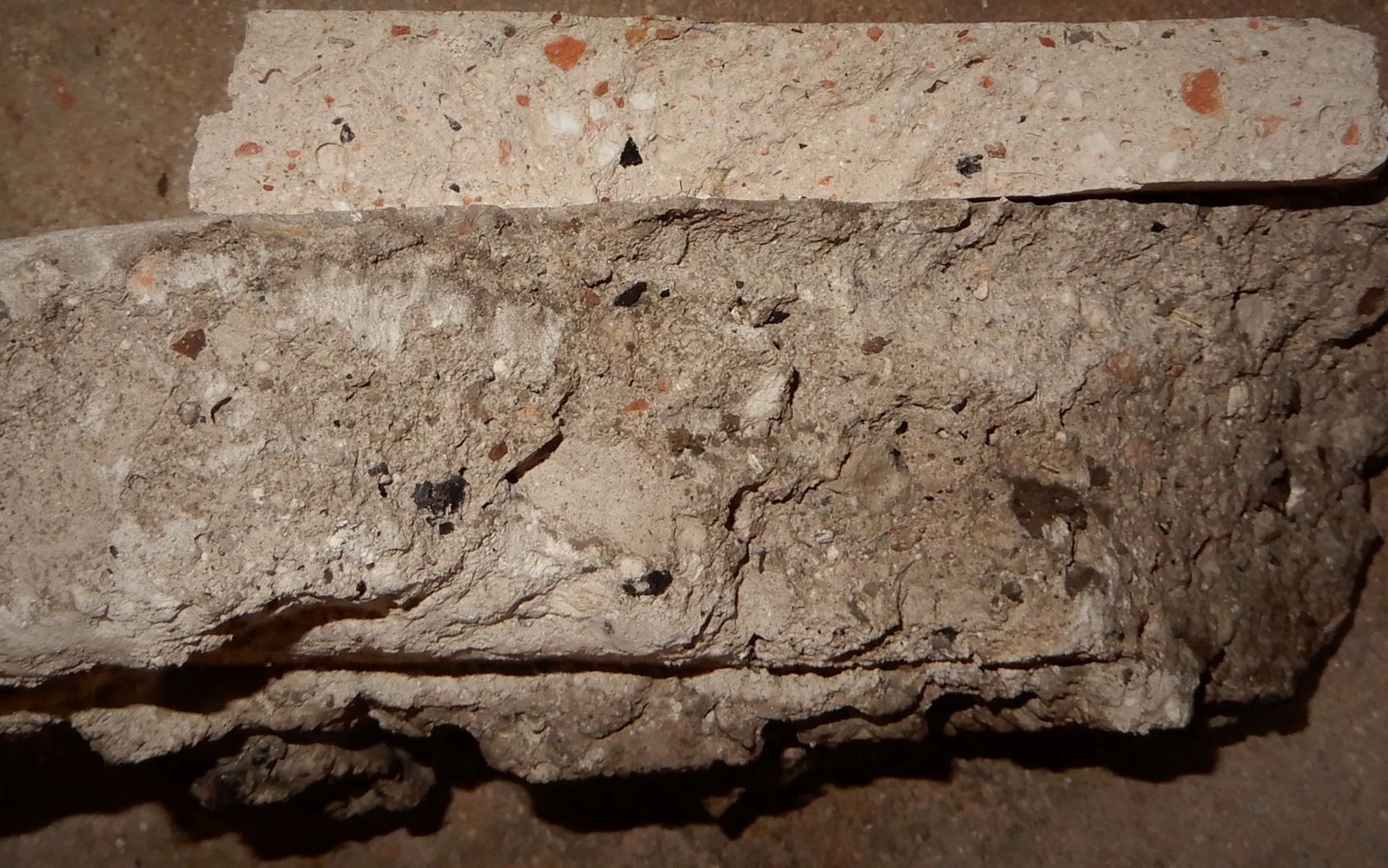
LIme ash floor and 1920-50's gyspum screed above
Related Articles
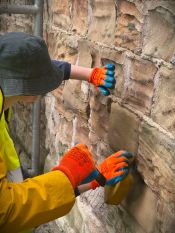
The steps members of the Waterton’s Wall restoration team, with support from Mark Womersley, have been following to consolidate, conserve and repair this historic wall that represents the successful efforts of Charles Waterton to preserve the wildlife that lived on his estate near Wakefield in West Yorkshire.
1. Fill deep voids behind the wall’s facing stones with deep pointing work. The works involve …
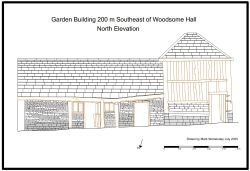
Mark spent a day recording a historic timber-framed garden building at Woodsome Hall
Mark Womersley, as part of his voluntary work with the Yorkshire Vernacular Buildings Study Group, spent…
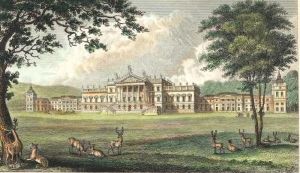
M Womersleys were delighted to offer a day of tutoring to those who attended the Wentworth Woodhouse Working Party
M Womersleys were delighted to offer a day of tutoring to those who attended the Wentworth Woodhouse…